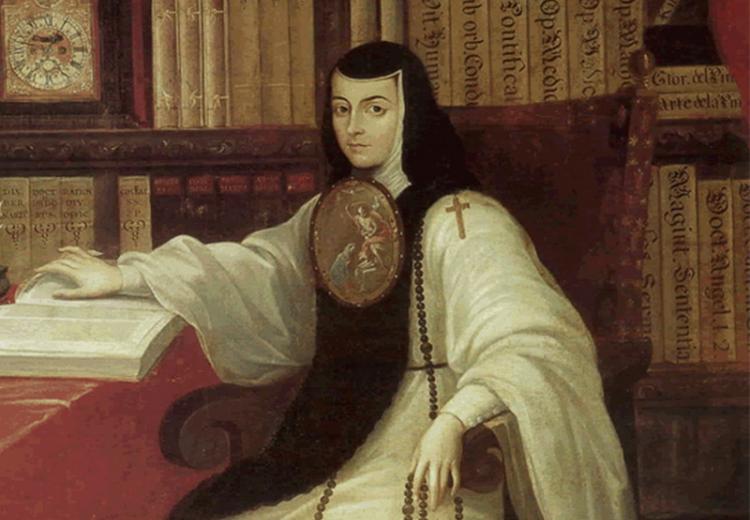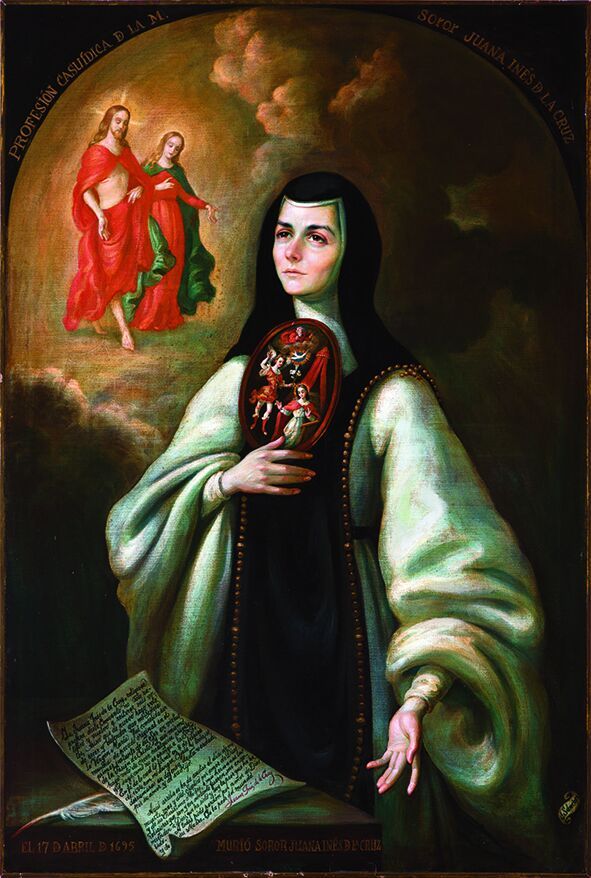
There, Sor Juana was allowed to continue her studies of philosophy, music, and natural science in her own library. Two years later, in 1669, she joined the more liberal order of San Jerónimo at the Convent of Santa Paula. In 1667, at the age of eighteen, she joined the conservative Convent of the Barefoot Carmelites, but she left the convent that same year due to illness. At the age of sixteen, in 1664, Sor Juana was asked to join the court as the viceriene’s lady in waiting, where the beautiful girl fended off many unwanted marriage proposals.

Sor Juana’s intellect and voracious appetite for knowledge garnered her a reputation as a child prodigy, and she became a favorite in the viceregal court, especially of the viceriene Doña Leonar Carreto, Marquesa de Moncera.

Sor Juana was so devoted to pursuing an education that she begged her mother to allow her to dress in men’s clothing in order to study at Mexico University, but her mother refused her permission. Even at a young age, Sor Juana demonstrated a keen intellect as she taught herself to read in her grandfather’s library at the age of three, and wrote a loa, which is a brief poem of praise, preceding a play, for the celebration of Santísimo Sacramento in Amecameca at the age of eight. She was the “illegitimate” child of a Spaniard, Pedro Manuel de Asbaje, and a criolla woman, Isabel Ramírez.

Sor Juana Inés de la Cruz (b. 1648–d. 1695) was born Juana Ramírez de Asbaje in San Miguel Nepantla, a rural area near Mexico City.


 0 kommentar(er)
0 kommentar(er)
